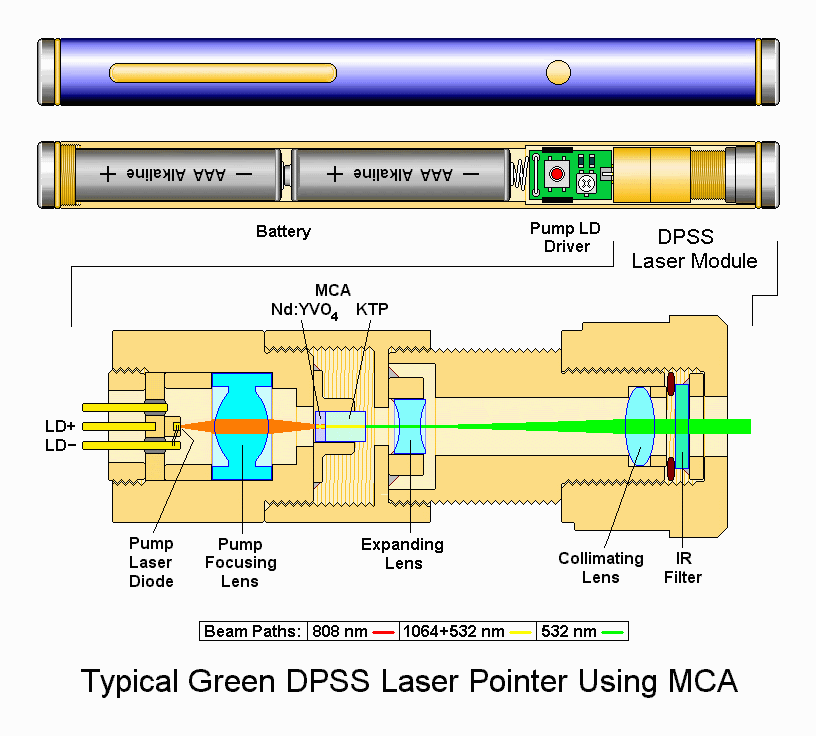Ash
0
- Joined
- Mar 3, 2009
- Messages
- 1,981
- Points
- 0
Here are some pics to help illustrate;damn, that is small!
1. Nanometer size comparison pictures.

These pictures show about how large a nanometer (or 100nm - 100,000,000nm) is in comparison to regular everyday stuff:

A collimated laser (beam) can be <1mm to +10mm
2. (Attached) The visible spectrum diagram indicates where different types of waves (including light waves) travel on the wavelength spectrum.
You can see that in the center is the "visible light", and hopefully you notice that a 405nm laser (close to 400) would be purple and a 660nm laser (close to 700) would be red.
To answer an earlier question of yours;
There are many different colors of lasers out there other than "red", "blue" and 'Green", so they have to say which Red: 635, 650, 660, 670, etc...
Here's a pic with all the lasers in their respective colors that are available:

-Now another term people keep throwing around in this thread is DPSS Laser. This is an acronym for Diode Pulsed Solid State Laser. This is different than a regular Diode Laser (Bluray, Red, IR).
DPSS can be illustrated here:

As you can see from the diagram for a green DPSS, the (barely visible) light emitted from a powerful 808nm (Infrared) Diode passes through a Nd:YVO4 crystal which turns it into 1064nm (even more invisible) light. That 1064nm light is passed through a KTP (Potassium Titanyl Phosphate) crystal which doubles the frequency of the light (thereby splitting the wavelength by 1/2) 1064 x 1/2 = 532.
Different crystals and different pump diodes are used in combination to make every color out there, but most DPSS lasers are very expensive (other than green).
And one more image just to make this post very heavy:





